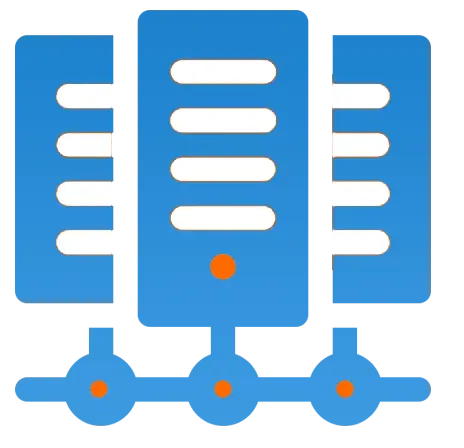Get 69% Off on Cloud Hosting : Claim Your Offer Now!
- Products
-
Compute
Compute
- Predefined TemplatesChoose from a library of predefined templates to deploy virtual machines!
- Custom TemplatesUse Cyfuture Cloud custom templates to create new VMs in a cloud computing environment
- Spot Machines/ Machines on Flex ModelAffordable compute instances suitable for batch jobs and fault-tolerant workloads.
- Shielded ComputingProtect enterprise workloads from threats like remote attacks, privilege escalation, and malicious insiders with Shielded Computing
- GPU CloudGet access to graphics processing units (GPUs) through a Cyfuture cloud infrastructure
- vAppsHost applications and services, or create a test or development environment with Cyfuture Cloud vApps, powered by VMware
- Serverless ComputingNo need to worry about provisioning or managing servers, switch to Serverless Computing with Cyfuture Cloud
- HPCHigh-Performance Computing
- BaremetalBare metal refers to a type of cloud computing service that provides access to dedicated physical servers, rather than virtualized servers.
-
Storage
Storage
- Standard StorageGet access to low-latency access to data and a high level of reliability with Cyfuture Cloud standard storage service
- Nearline StorageStore data at a lower cost without compromising on the level of availability with Nearline
- Coldline StorageStore infrequently used data at low cost with Cyfuture Cloud coldline storage
- Archival StorageStore data in a long-term, durable manner with Cyfuture Cloud archival storage service
-
Database
Database
- MS SQLStore and manage a wide range of applications with Cyfuture Cloud MS SQL
- MariaDBStore and manage data with the cloud with enhanced speed and reliability
- MongoDBNow, store and manage large amounts of data in the cloud with Cyfuture Cloud MongoDB
- Redis CacheStore and retrieve large amounts of data quickly with Cyfuture Cloud Redis Cache
-
Automation
Automation
-
Containers
Containers
- KubernetesNow deploy and manage your applications more efficiently and effectively with the Cyfuture Cloud Kubernetes service
- MicroservicesDesign a cloud application that is multilingual, easily scalable, easy to maintain and deploy, highly available, and minimizes failures using Cyfuture Cloud microservices
-
Operations
Operations
- Real-time Monitoring & Logging ServicesMonitor & track the performance of your applications with real-time monitoring & logging services offered by Cyfuture Cloud
- Infra-maintenance & OptimizationEnsure that your organization is functioning properly with Cyfuture Cloud
- Application Performance ServiceOptimize the performance of your applications over cloud with us
- Database Performance ServiceOptimize the performance of databases over the cloud with us
- Security Managed ServiceProtect your systems and data from security threats with us!
- Back-up As a ServiceStore and manage backups of data in the cloud with Cyfuture Cloud Backup as a Service
- Data Back-up & RestoreStore and manage backups of your data in the cloud with us
- Remote Back-upStore and manage backups in the cloud with remote backup service with Cyfuture Cloud
- Disaster RecoveryStore copies of your data and applications in the cloud and use them to recover in the event of a disaster with the disaster recovery service offered by us
-
Networking
Networking
- Load BalancerEnsure that applications deployed across cloud environments are available, secure, and responsive with an easy, modern approach to load balancing
- Virtual Data CenterNo need to build and maintain a physical data center. It’s time for the virtual data center
- Private LinkPrivate Link is a service offered by Cyfuture Cloud that enables businesses to securely connect their on-premises network to Cyfuture Cloud's network over a private network connection
- Private CircuitGain a high level of security and privacy with private circuits
- VPN GatewaySecurely connect your on-premises network to our network over the internet with VPN Gateway
- CDNGet high availability and performance by distributing the service spatially relative to end users with CDN
-
Media
-
Analytics
Analytics
-
Security
Security
-
Network Firewall
- DNATTranslate destination IP address when connecting from public IP address to a private IP address with DNAT
- SNATWith SNAT, allow traffic from a private network to go to the internet
- WAFProtect your applications from any malicious activity with Cyfuture Cloud WAF service
- DDoSSave your organization from DoSS attacks with Cyfuture Cloud
- IPS/ IDSMonitor and prevent your cloud-based network & infrastructure with IPS/ IDS service by Cyfuture Cloud
- Anti-Virus & Anti-MalwareProtect your cloud-based network & infrastructure with antivirus and antimalware services by Cyfuture Cloud
- Threat EmulationTest the effectiveness of cloud security system with Cyfuture Cloud threat emulation service
- SIEM & SOARMonitor and respond to security threats with SIEM & SOAR services offered by Cyfuture Cloud
- Multi-Factor AuthenticationNow provide an additional layer of security to prevent unauthorized users from accessing your cloud account, even when the password has been stolen!
- SSLSecure data transmission over web browsers with SSL service offered by Cyfuture Cloud
- Threat Detection/ Zero DayThreat detection and zero-day protection are security features that are offered by Cyfuture Cloud as a part of its security offerings
- Vulnerability AssesmentIdentify and analyze vulnerabilities and weaknesses with the Vulnerability Assessment service offered by Cyfuture Cloud
- Penetration TestingIdentify and analyze vulnerabilities and weaknesses with the Penetration Testing service offered by Cyfuture Cloud
- Cloud Key ManagementSecure storage, management, and use of cryptographic keys within a cloud environment with Cloud Key Management
- Cloud Security Posture Management serviceWith Cyfuture Cloud, you get continuous cloud security improvements and adaptations to reduce the chances of successful attacks
- Managed HSMProtect sensitive data and meet regulatory requirements for secure data storage and processing.
- Zero TrustEnsure complete security of network connections and devices over the cloud with Zero Trust Service
- IdentityManage and control access to their network resources and applications for your business with Identity service by Cyfuture Cloud
-
-
Compute
- Solutions
-
Solutions
Solutions
-
 Cloud
Hosting
Cloud
Hosting
-
 VPS
Hosting
VPS
Hosting
-
GPU Cloud
-
 Dedicated
Server
Dedicated
Server
-
 Server
Colocation
Server
Colocation
-
 Backup as a Service
Backup as a Service
-
 CDN
Network
CDN
Network
-
 Window
Cloud Hosting
Window
Cloud Hosting
-
 Linux
Cloud Hosting
Linux
Cloud Hosting
-
Managed Cloud Service
-
Storage as a Service
-
 VMware
Public Cloud
VMware
Public Cloud
-
 Multi-Cloud
Hosting
Multi-Cloud
Hosting
-
 Cloud
Server Hosting
Cloud
Server Hosting
-
 Bare
Metal Server
Bare
Metal Server
-
 Virtual
Machine
Virtual
Machine
-
 Magento
Hosting
Magento
Hosting
-
Remote Backup
-
 DevOps
DevOps
-
 Kubernetes
Kubernetes
-
 Cloud
Storage
Cloud
Storage
-
NVMe Hosting
-
 DR
as s Service
DR
as s Service
-
-
Solutions
- Marketplace
- Pricing
- Resources
- Resources
-
By Product
Use Cases
-
By Industry
- Company
-
Company
Company
-
Company
Kubernetes and Cloud Security
Table of Contents
Kubernetes is an open-source container orchestration system that automates containerized applications’ deployment, scaling, and management. It helps to simplify the process of running and managing containerized applications in a cluster environment. Kubernetes is widely used in cloud computing as it allows for deploying and scaling applications across multiple cloud providers and on-premises infrastructure.
Cloud security is a concern for many organizations that use cloud computing services. Some main concerns include data breaches, unauthorized access to sensitive information, and attacks on cloud infrastructure. According to a report by the Cloud Security Alliance, the top three security concerns for organizations using cloud computing are data breaches (43%), unauthorized access (42%), and insecure interfaces and APIs (40%). Additionally, the number of reported security incidents in cloud environments has been increasing, with the majority of these incidents being caused by misconfigurations and a lack of visibility into the security of cloud resources.
Kubernetes Security Best Practices
Kubernetes is a powerful tool for managing containerized applications and brings new security challenges. To ensure the security of a Kubernetes cluster, it is important to implement best practices such as network segmentation and isolation, secure image management, role-based access control, secret management, and regular vulnerability scanning and patching. Network segmentation can be achieved using network policies and namespaces, while secure image management involves regularly updating images and scanning them for vulnerabilities. Role-based access control (RBAC) is a method to control access to resources based on the roles of individual users or service accounts.
Secret Management
It is crucial for securely storing and managing sensitive information, and Kubernetes provides built-in support. Regular vulnerability scanning and patching are important to detect and fix vulnerabilities in the cluster and can be automated using security and vulnerability scanners. Implementing these best practices can reduce the risk of security incidents and ensure the safety of sensitive data in a Kubernetes cluster.
Network Segmentation
Network Segmentation and isolation involves dividing a network into smaller segments, or security zones, to limit the spread of an attack and reduce the potential impact of a security incident. In Kubernetes, network segmentation can be achieved by using network policies to control communication between pods and using namespaces to create isolated environments for different environments and teams.
Secure Image Management
is important for ensuring that the container images used in a Kubernetes cluster are free from vulnerabilities and malware. Best practices include regularly updating images, using signed images, and scanning images for vulnerabilities. In addition, using image registries that provide vulnerability scanning and alerting can also be helpful.
Role-based Access Control (RBAC)
RBAC regulates access to resources in a Kubernetes cluster based on the roles of individual users or service accounts. RBAC can limit the actions a user or service account can perform in a cluster, such as creating or modifying resources.
Secret Management
securely stores and manages sensitive information, such as passwords, tokens, and keys, in a Kubernetes cluster. Kubernetes provides built-in support for secret management through the use of Kubernetes Secrets. Best practices include avoiding storing secrets in container images and instead using Kubernetes Secrets to store them.
Regular Vulnerability
scanning and patching are important parts of maintaining the security of a Kubernetes cluster. This involves regularly scanning the cluster for vulnerabilities and applying patches to address identified issues. Automated tools such as Kubernetes security and vulnerability scanners can help automate this process.
Cloud Provider Security Measures
Major cloud providers such as AWS, Azure, and GCP offer a variety of security measures to help protect their customers’ data and infrastructure. Some examples include:
– AWS: AWS provides several security services, such as Identity and Access Management (IAM), Virtual Private Cloud (VPC), which enables network isolation and segmentation, and security groups that control inbound and outbound traffic to resources.
– Azure: Azure provides services such as Azure Security Center, Azure Policy, and Azure Active Directory, which can manage access controls, monitor security events, and enforce compliance policies. Azure also provides Azure Virtual Network, which allows network segmentation and isolation.
– GCP: GCP provides services such as Google Cloud Identity and Access Management (IAM), Cloud Armor, and Stackdriver, which can control access to resources, protect against DDoS attacks, and monitor security events. GCP also provides VPC, which is used for network segmentation and isolation.
The security measures offered by these cloud providers complement the Kubernetes security best practices by providing additional layers of security for the infrastructure and applications running on the cluster. For example, using AWS VPC, Azure Virtual Network, and GCP VPC allows for network segmentation and isolation, enhancing the cluster’s security. Additionally, cloud providers’ access management services such as AWS IAM, Azure AD, and GCP IAM can help enforce role-based access control in the cluster, complementing the Kubernetes built-in RBAC. These security measures also provide centralized security management, monitoring, and logging, which can be used to gain visibility into the cluster’s security and respond to security incidents.
Monitoring & Auditing in Kubernetes
Monitoring and auditing in a Kubernetes environment are important to ensure the cluster’s availability, performance, and security as the applications running on it. Monitoring provides real-time visibility into the health and performance of the cluster and its components, such as nodes and pods. In contrast, auditing provides a historical record of events and actions taken in the cluster. This information can identify and troubleshoot issues, detect and respond to security incidents, and ensure compliance with organizational policies and regulations.
Various tools and techniques are available for monitoring and auditing Kubernetes clusters. Some examples include:
- Kubernetes built-in tools: Kubernetes provides several built-in tools, such as kubectl and kubeadm, that can be used for monitoring and auditing. For example, kubectl can be used to view the status of pods and nodes, and kubeadm can be used to view the status of the cluster and its components.
- Prometheus and Grafana: Prometheus is an open-source monitoring system that collects and queries metrics from Kubernetes clusters. Grafana is a visualization tool that can display the metrics collected by Prometheus in a user-friendly format.
- EFK Stack: Elasticsearch, Fluentd, and Kibana (EFK) is a logging stack that can be used to collect, store, and visualize log data from Kubernetes clusters.
- Audit Logging: Kubernetes provides built-in audit logging, which allows to the record of all the requests made to the API server and can be used to monitor and audit the actions taken in the cluster.
- Third-party monitoring and auditing tools: There are also several third-party tools available, such as Sysdig, Datadog, and Stackdriver, that can be used to monitor and audit Kubernetes clusters. These tools provide additional features and functionality, such as advanced alerting and reporting, and can be integrated with other tools and systems.
It’s worth mentioning that the best solution for monitoring and auditing depends on the organization’s specific needs and requirements. Some organizations prefer combining built-in tools and third-party tools for monitoring and auditing their Kubernetes clusters.
In a Nutshell
In summary, Kubernetes is a powerful tool for managing containerized applications, but it also brings new security challenges. To ensure the security of a Kubernetes cluster, it is important to implement best practices such as network segmentation and isolation, secure image management, role-based access control, secret management, and regular vulnerability scanning and patching. Major cloud providers such as AWS, Azure, and GCP offer a variety of security measures to help protect their customers’ data and infrastructure. These measures complement Kubernetes security best practices by providing additional layers of security for the infrastructure and applications running on the cluster. Monitoring and auditing in a Kubernetes environment are important to ensure the cluster’s availability, performance, and security as the applications running on it. Several tools and techniques are available for monitoring and auditing Kubernetes clusters, including built-in tools, Prometheus and Grafana, EFK stack, and third-party monitoring and auditing tools.
The future outlook for Kubernetes and cloud security is promising as the use of Kubernetes and cloud computing continues to grow. As more organizations adopt Kubernetes and move their workloads to the cloud, the need for effective security solutions and best practices will become increasingly important.
Recent Post

Stay Ahead of the Curve.
Join the Cloud Movement, today!
© Cyfuture, All rights reserved.
Send this to a friend

 Pricing
Calculator
Pricing
Calculator
 Power
Power
 Utilities
Utilities VMware
Private Cloud
VMware
Private Cloud VMware
on AWS
VMware
on AWS VMware
on Azure
VMware
on Azure Service
Level Agreement
Service
Level Agreement 


















